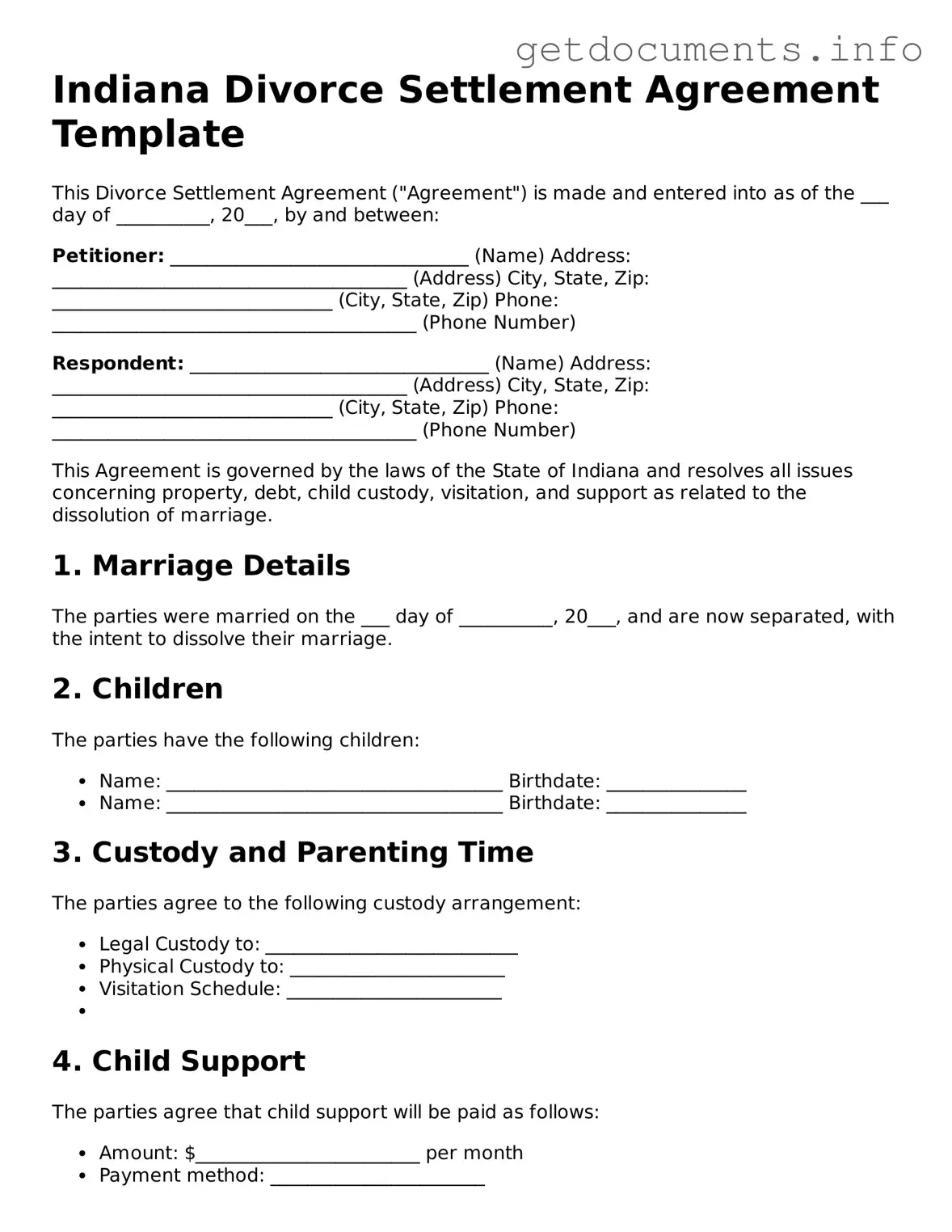Free Divorce Settlement Agreement Template for Indiana
The Indiana Divorce Settlement Agreement form is a legal document that outlines the terms agreed upon by both parties during a divorce. This form addresses important issues such as property division, child custody, and spousal support. Completing this form is a crucial step in finalizing a divorce in Indiana, so take action by filling it out today by clicking the button below.
Access Divorce Settlement Agreement Editor
